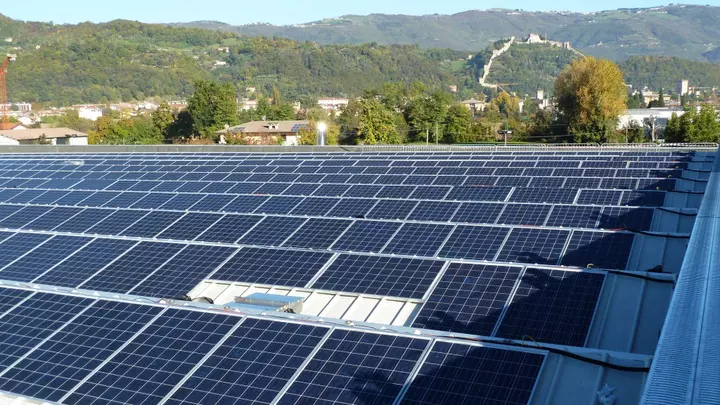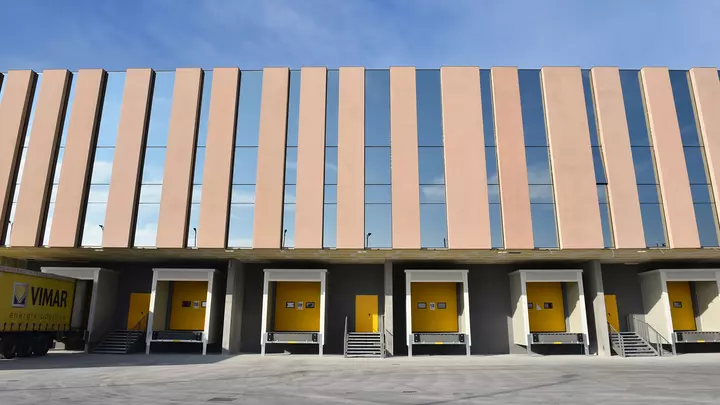Environmental sustainability with photovoltaic and geothermal power
Photovoltaic
Viale Vicenza
In 2011, a photovoltaic system with a power of 623 kWp was installed on the roof of the site in Viale Vicenza. The system comprises 2,710 photovoltaic modules in polycrystalline silicon, for a total surface area of 4,471 m2 and 7 generators.
Since it was installed, the system has produced a total of 6,900,000 kWh and has allowed a saving, in terms of reduced CO2 emissions, in the region of 200 tonnes/year. The portion of electricity auto-consumed by manufacturing activities exceeds 85% of the energy produced. the energy obtained from the sun covers 10% of the energy requirements of the entire production plant and 5% of the total energy requirements.
Corso della Ceramica
A photovoltaic system with a power of 732 kWp was built on the roof covering the warehouses in Corso della Ceramica. 2,440 photovoltaic modules in high-efficiency monocrystalline silicon were installed, for a total surface are of 3,900 m2. These modules exploit a technology which guarantees greater output in relation to the surface in all weather conditions. They have a special inner lining which acts like a mirror and reflects and catches the sun’s rays that are normally dispersed.
The expected annual electricity production is in the region of 800,000 kWh, totalling ¼ of the site’s energy consumption levels and those of approximately 300 families. This project will guarantee a reduction in CO2 emissions of 230 tonnes/year.
Geothermal
An open-loop geothermal system for air conditioning has been installed in the production plant on Corso della Ceramica.
Today, geothermal energy constitutes one of the most efficient renewable energy sources with the smallest environmental impact among those available. The thermal energy in the soil is in fact inexhaustible and constant throughout the year, guaranteeing heating and air conditioning in any condition. In the open-loop system, the ground water is exploited directly as a source of thermal energy. In this type of system, wells are created, which are fed by the ground water, and water is drawn from them and sent to a heat exchanger and then immediately reintroduced back into the ground via a second well. The water drawn is therefore not altered in any way, nor is it wasted, as the only thing that happens is a slight variation in temperature of just a few degrees Centigrade (max 5 °C).
The thermal energy drawn by the heat exchanger is conveyed to 2 heat pumps capable of generating hot or cold water depending on the seasonal request. Our system consists of two drawing wells (depth of -59 m) and two return wells (depth of -56 m) with a maximum drawing capacity of 45 l/s. The ground water circuit is completely separate from the cooling machinery circuit, thereby avoiding any and all contamination. The geothermal system is alone able to satisfy the majority of energy required to air condition the new production plant but it needs to be supported by two air/water heat pumps capable of coping with the seasonal heat and cold demand peaks.
The particular constancy and quality of the energy resource at the air/water heat pump inlet allows these to operate with much higher performance levels than traditional air machinery (up to 60% more), contributing towards making the overall efficiency of the system extremely high. The energy saving that can be achieved with the geothermal system compared to a conventional system is in the region of 400,000 kWhe equivalent to the average annual consumption of 150 families. In addition to the smaller impact on the primary energy used, this technology makes it possible to reduce CO2 emissions (-115 tonnes/year).

